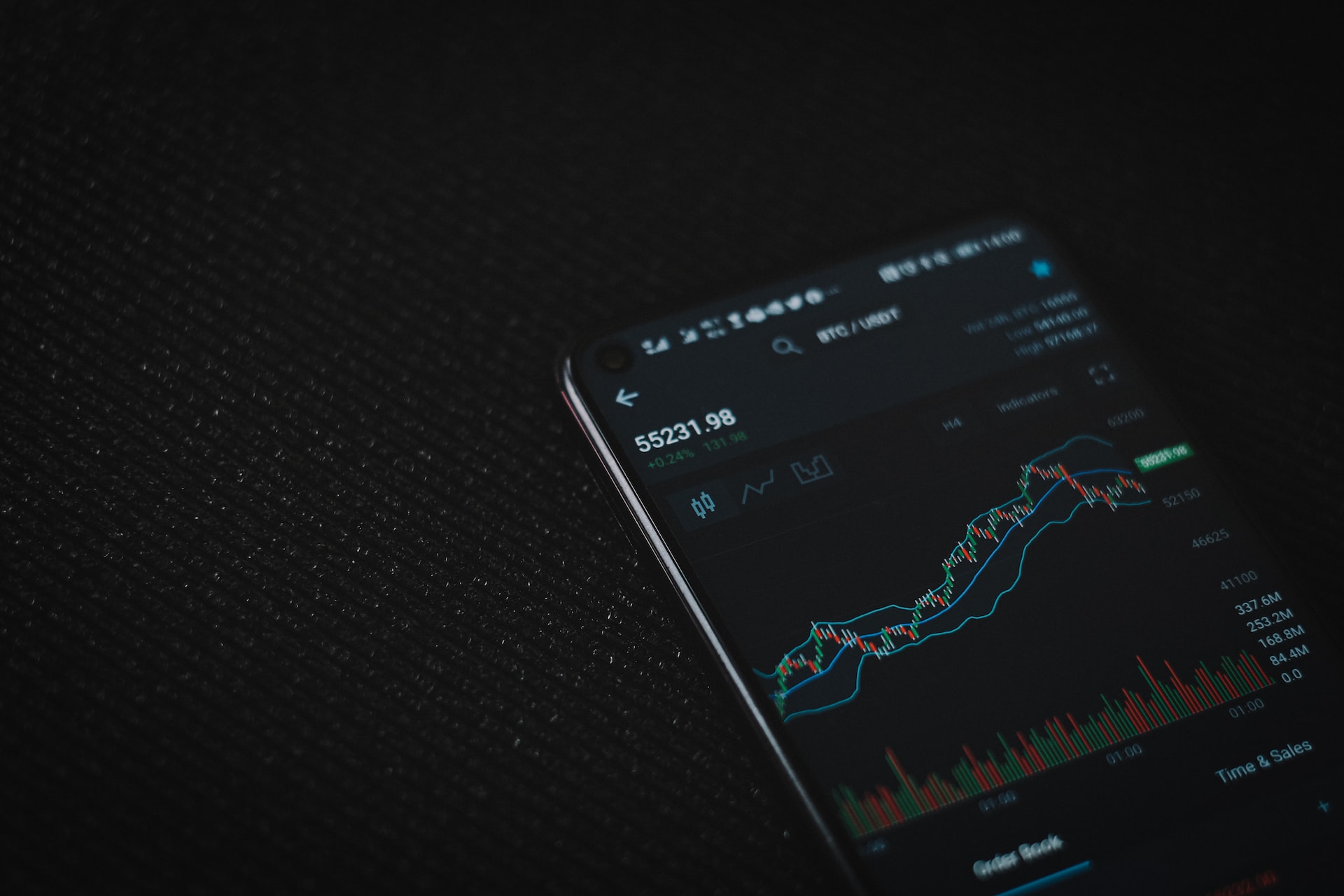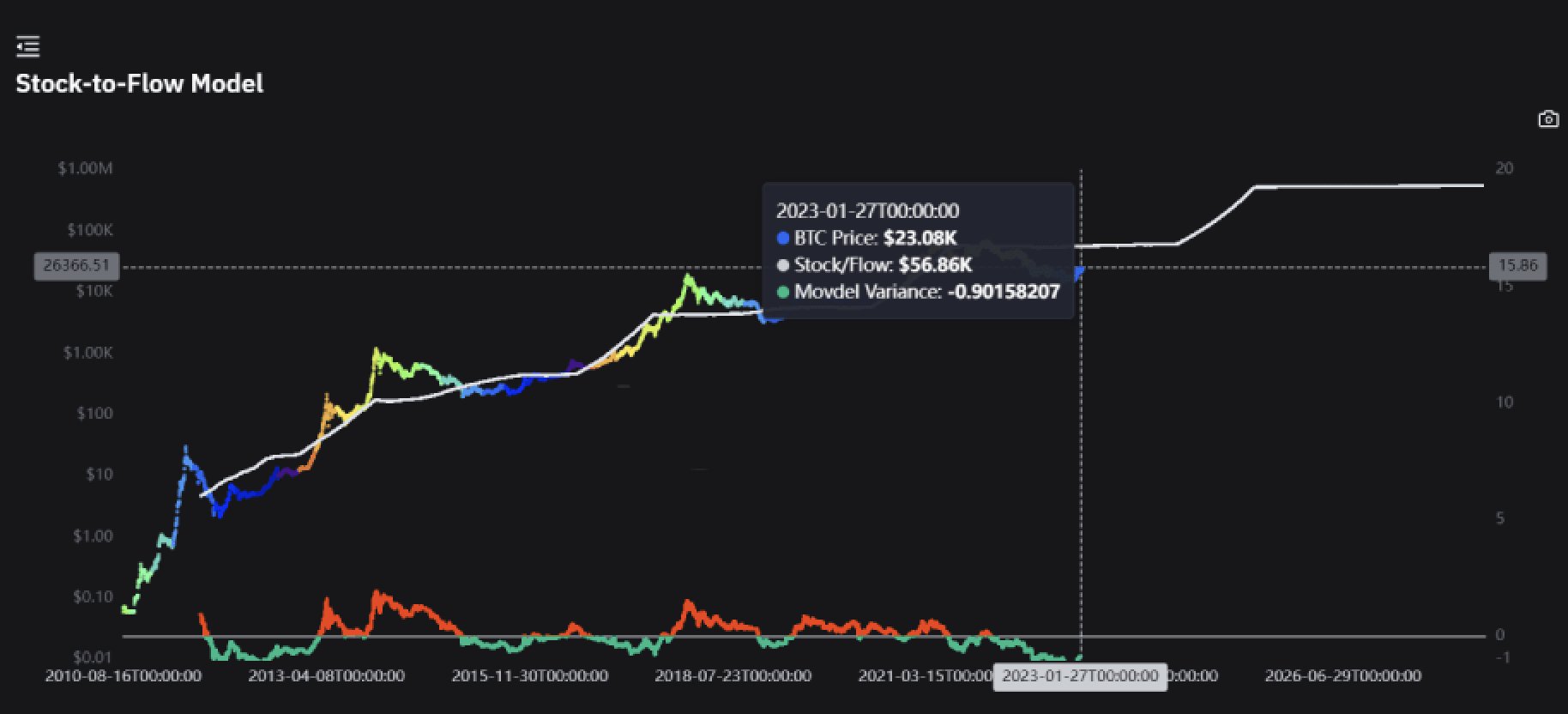What is it and can you use it to trade BTC?

The crypto asset markets are constantly evolving, and with it new tools and methods for understanding and analyzing the market. One such tool is the Bitcoin Stock-to-Flow (S2F) model, which aims to predict the price of Bitcoin based on its scarcity.
In this guide, we will explore what the Bitcoin Stock-to-Flow model is, the pros and cons of the model, and whether you can use it to trade bitcoin.
What is the Bitcoin Stock-to-Flow Model?
The mastermind behind the Bitcoin Stock-to-Flow model is a Twitter user known as Plan B. Despite their mysterious identity, they claim to be a highly skilled institutional investor hailing from the Netherlands, with a background in both legal and quantitative finance.
PlanB took the classic Stock-to-Flow model and put a digital twist on it, using it to predict the value of bitcoin (BTC). With S2F’s predictions proving accurate multiple times in Bitcoin’s short history, PlanB’s Stock-to-Flow model quickly became a popular tool for Bitcoin investors.
The Stock-to-Flow (S2F) model is an economic model that measures the relationship between the existing stock (supply) of a commodity and its flow (annual production or supply growth). The stock-to-flow ratio is calculated as the stock divided by the flow and is used to measure the scarcity of an item.
Stock-to-Flow = Stock/Flow
The Stock-to-Flow model was originally developed for precious metals such as gold and silver, but has since been applied to other assets, including Bitcoin.
In the case of Bitcoin, the Stock-to-Flow model compares the current stock of Bitcoin with its annual production, which is the new bitcoins created through mining.
The stock-to-flow ratio is calculated as the stock divided by the flow and is used to measure the scarcity of an item. A high stock-to-flow ratio implies a low annual production and a relatively large existing stock, which typically leads to a higher perceived value and price.
To put this into better perspective, let’s take a look at the Stock-to-Flow of gold. The stock of gold is 197,576 tonnes, and the flow is 3,000 tonnes per year. This calculation gives us a stock-to-flow ratio of 65.85, which means it would take about 66 years of mining to double the amount of gold in circulation. This shows that gold is very thin compared to silver, which has a Stock-to-Flow ratio of 22. This helps explain why gold is more expensive, priced at $1,914 per ounce, while silver is priced at $23 per ounce.
Similarly, we can calculate the Stock-to-Flow for Bitcoin as of January 31, 2023. The stock (supply) of bitcoin is 19.28 million, and there are currently around 385,000 bitcoin mined in a year.
19.28M/385K = 58.69.
Since we know the exact supply of bitcoin also in the future, we can calculate Stock-to-Flow and predict future prices, thus making more informed investment decisions.
How Bitcoin’s Scarcity Affects the Stock-to-Flow Model
The scarcity of Bitcoin is a crucial factor in understanding its value and price, and it is closely related to the Stock-to-Flow model.
Bitcoin has a limited supply, with only 21 million bitcoins ever created. This scarcity, combined with the growing demand for the currency, creates upward pressure on the price.
An important aspect of Bitcoin’s scarcity is the halving event. Every four years, the rate of extraction of new bitcoin by miners is halved. When Bitcoin was first introduced, miners were rewarded with 50 bitcoins per block. This amount was reduced to 25 bitcoin in 2012 and further reduced to 12.5 bitcoin in 2016. As of May 2020, the reward for mining a new block is 6.25 bitcoin.
This pattern of reducing the flow of new bitcoin into the market is set to continue, meaning that the stock-to-flow ratio of Bitcoin will continue to increase.
In the end, there will be almost no new supply of bitcoin entering the market, so the price is determined solely by demand. This situation has led to some optimistic predictions regarding the future price of bitcoin.
The Bitcoin Stock-to-Flow Chart

The Bitcoin Stock-to-Flow chart provides a visual representation of the Stock-to-Flow ratio over time and is used by some investors to assess the current state of the market. The chart shows the historical stock-to-flow ratio of bitcoin, as well as projected ratios for future years.
Pros and Cons of the Bitcoin Stock-to-Flow Model
Like any economic model, the Bitcoin Stock-to-Flow model has its strengths and weaknesses. Here are some of the advantages and disadvantages of the model:
Benefits
- Gives a framework for understanding the relationship between scarcity, value and price in the case of Bitcoin.
- Offers a simple and simple method for assessing the current state of the market based on scarcity.
- Provides a long-term perspective: The Stock-to-Flow model takes into account the long-term supply and demand dynamics of Bitcoin, making it a valuable tool for those looking to make long-term investment decisions.
Cons
- Limited scope: The Stock-to-Flow model does not take into account other factors that can affect the price of bitcoin, such as demand, market sentiment, regulatory changes, global economic conditions, technological advances and competition from other cryptocurrencies.
- Historical data only: Although the Stock-to-Flow model has been accurate in the past, it is based solely on historical data and does not take into account unpredictable events that could affect the price of bitcoin in the future.
Can You Use Bitcoin Stock-to-Flow Model to Trade Bitcoin?
The short answer is yes; you can use the Bitcoin Stock-to-Flow model to trade bitcoin.
By understanding the stock-to-flow ratio and the historical trends in the market, traders and investors can make decisions about buying and selling bitcoin.
On the other hand, it is important to keep in mind that the Bitcoin Stock-to-Flow model is only one tool among many and should not be relied upon exclusively. Many factors can affect the price of bitcoin, and it is important to consider these other factors when making investment decisions.
In addition, it is crucial to approach any type of trading or investment with caution and to thoroughly research and understand the market before making any decisions. While the Bitcoin Stock-to-Flow model can provide valuable information and insight, it is always important to consider multiple sources of information and use a combination of different tools and methods when analyzing the market.
In conclusion, the Bitcoin Stock-to-Flow model is a useful tool for understanding the relationship between scarcity, value and price in the case of bitcoin. By taking into account the scarcity of the currency and the historical trends of the market, traders and investors can make informed decisions about buying and selling bitcoin.
However, it is important to remember that the model is only one tool among many, and should be used together with other sources of information and analysis.

